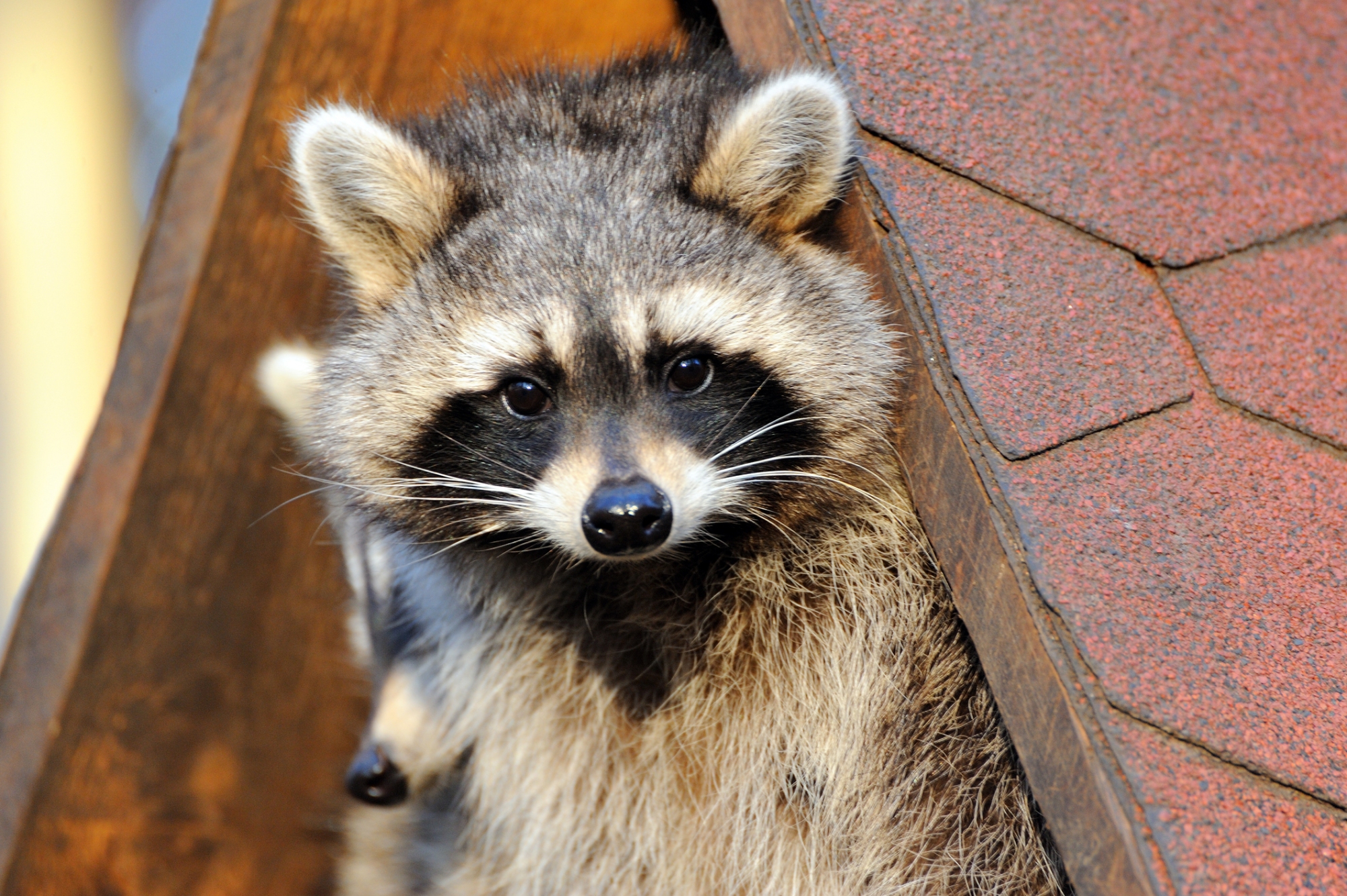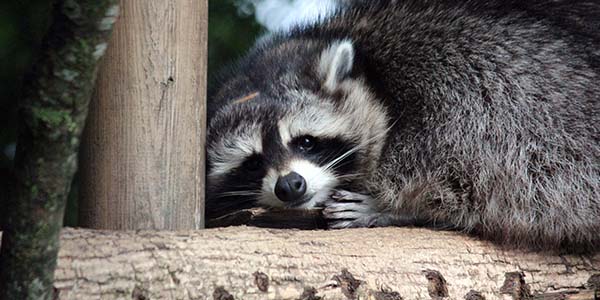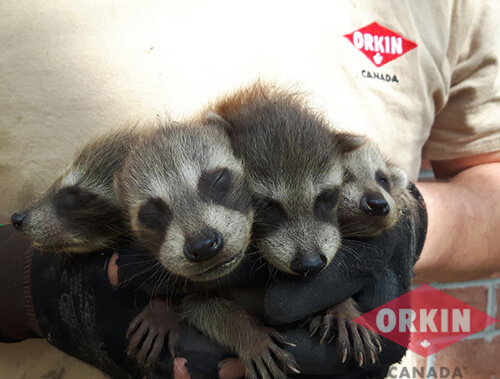Raccoons typically live 2-3 years in the wild, but can live up to 20 years in captivity. In the wild, raccoons face various threats that impact their lifespan, such as predators, diseases, and habitat loss.
Despite their adaptability and intelligence, many raccoons succumb to these challenges. However, in captivity, raccoons are provided with a stable environment, proper care, and protection from external dangers, which can significantly extend their lifespan. Understanding the factors that affect raccoon longevity is crucial for conservation efforts and ensuring the well-being of these fascinating creatures.
Let’s delve deeper into the factors influencing the lifespan of raccoons and how they adapt to different environments.
Introduction To Raccoon Longevity
Raccoons are fascinating creatures known for their mischievous behavior and distinctive masked faces. But have you ever wondered how long these clever critters actually live? In this article, we will explore the topic of raccoon longevity, discussing their typical lifespan in the wild as well as their expectancy in captivity. Let’s dive into the world of raccoon lifespan and discover some interesting facts!
Typical Lifespan In The Wild
Raccoons, commonly found in North America, have an average lifespan of 2 to 3 years in the wild. However, some lucky raccoons may live up to 5 years or more. Their survival in the wild depends on various factors, including their ability to find food, avoid predators, and withstand harsh weather conditions.
Raccoons face a multitude of challenges in their natural habitat, such as competition for resources, diseases, and the risks associated with crossing roads. These factors contribute to the relatively short lifespan of raccoons in the wild.
Expectancy In Captivity
When kept in captivity, raccoons tend to live longer compared to their wild counterparts. In a well-maintained and suitable environment, a raccoon’s lifespan can extend up to 20 years or more. This significant difference in longevity is due to the absence of natural threats, consistent access to food and water, and proper veterinary care.
It’s important to note that keeping raccoons as pets is regulated in many places and may require special permits or licenses. Captivity should always prioritize the well-being and welfare of the animal, providing them with a safe and enriching environment.
Now that we have explored both the typical lifespan of raccoons in the wild and their expectancy in captivity, it’s clear that their living conditions greatly influence their longevity. Whether roaming the forests or living in a controlled setting, raccoons continue to captivate us with their adaptability and resilience.
Factors Influencing Raccoon Lifespan
Genetics And Biology
Raccoons, like many animals, have a specific genetic makeup and biological factors that contribute to their lifespan.
Genetic diversity within raccoon populations can impact their ability to adapt to environmental changes.
Raccoons are opportunistic omnivores, with their adaptable diet and behavior influenced by their genetic predispositions.
Environmental Impacts
The lifespan of raccoons is also influenced by various environmental factors.
Urbanization has significantly impacted raccoon populations, affecting their habitat and food sources.
- Pollution
- Human activity
- Loss of natural habitat
These factors can reduce the average lifespan of raccoons in urban areas.
Predators And Threats
As with any species, raccoons face various predators and threats in their environment. Understanding these factors can provide valuable insights into their survival and overall lifespan. Let’s delve into the natural predators and human-related threats that impact raccoon populations.
Natural Predators
Raccoons, despite being adaptable and resourceful animals, have their fair share of natural predators. These predators play a role in shaping raccoon populations and influencing their lifespan. Some of the natural predators that pose a threat to raccoons include:
- Coyotes
- Bobcats
- Great horned owls
- Red foxes
These predators primarily target raccoon young or weak individuals, as adult raccoons are more capable of defending themselves. However, even adults can fall prey to these predators under certain circumstances.
Human-related Threats
While natural predators play a role in regulating raccoon populations, human-related threats pose significant challenges to their survival. Raccoons often come into conflict with humans due to their adaptability and ability to thrive in urban and suburban areas. Some common human-related threats to raccoons include:
- Habitat loss due to urbanization
- Vehicle collisions
- Trapping and hunting
- Poisoning from ingesting toxic substances
- Encounters with domestic pets
These threats can have a direct impact on raccoon populations, reducing their lifespan and overall survival rates. It is crucial for humans to be aware of these threats and take necessary measures to minimize their impact on raccoon populations.

Credit: www.trutechinc.com
Diet And Nutrition
Raccoons are opportunistic omnivores, which means they have a varied diet consisting of both plant and animal matter. Their adaptability allows them to consume a wide range of food sources, making them highly successful in both urban and rural environments. Understanding the diet and nutrition of raccoons is essential for gaining insight into their behavior and overall health.
Importance Of Diet
The diet of raccoons plays a crucial role in their survival and well-being. Proper nutrition is essential for maintaining their energy levels, supporting growth and development, and aiding in reproduction. A well-balanced diet ensures that raccoons have the necessary nutrients to thrive in their habitat.
Common Dietary Choices
Raccoons have a diverse palate and will consume whatever food sources are available to them. Some of their common dietary choices include:
- Protein: Raccoons are opportunistic hunters and scavengers, feeding on small mammals, birds, eggs, insects, and fish. They are also known to raid bird nests and poultry farms for an easy protein-rich meal.
- Plant Matter: Raccoons are not solely carnivorous; they also consume a variety of plant matter. This can include fruits, nuts, grains, vegetables, and even the occasional carrion.
- Human Food: Due to their adaptability, raccoons have become adept at scavenging human food sources. They are known to raid garbage cans, dumpsters, and even break into homes in search of easily accessible and highly palatable food.
Raccoons are known for their ability to wash their food before consuming it, earning them the nickname “washing bears.” This behavior is believed to enhance their tactile sensitivity and aid in the detection of prey or the removal of unwanted debris from their food.
It is important to note that while raccoons have a broad diet, not all food sources are suitable or healthy for them. Feeding raccoons human food intentionally can lead to dependence, habituation, and potential health issues. It is best to allow raccoons to forage for their natural food sources rather than encouraging their presence by providing human food.
The diet and nutrition of raccoons are crucial aspects of their survival and overall health. Understanding their dietary choices and the importance of a balanced diet can help us coexist with these fascinating creatures while ensuring their well-being.
Reproductive Cycle And Lifespan
Raccoons have a fascinating reproductive cycle and lifespan, which greatly influences their population and behavior. Understanding their mating habits and offspring survival rate is crucial in comprehending how long raccoons live.
Mating Habits
Raccoons typically mate in late winter to early spring, with males seeking multiple females to mate with. The mating process involves vocalizations, chasing, and physical interactions, often taking place at night.
Offspring Survival Rate
Raccoons have a relatively high reproductive rate, with females giving birth to litters of 3 to 5 kits after a gestation period of about 63 days. The survival rate of the offspring largely depends on the availability of food, shelter, and protection from predators.

Credit: pensacola.aaacwildliferemoval.com
Health Concerns And Diseases
Raccoons are known for their resilience and adaptability, but like any living creature, they are susceptible to a variety of health concerns and diseases. Understanding the potential risks associated with raccoons can help ensure the well-being of both humans and these intelligent animals.
Common Illnesses
Raccoons can suffer from a range of common illnesses, including rabies, distemper, and roundworm infection. These illnesses can pose a risk to both raccoons and humans, making it essential to exercise caution when encountering these animals. Rabies is a viral disease that affects the central nervous system, while distemper is a contagious viral illness that can cause respiratory and neurological symptoms. Additionally, raccoons can carry roundworm, which can be transmitted to humans and cause serious health issues.
Injury And Recovery
Raccoons are prone to injuries, often resulting from encounters with vehicles, falls, or fights with other animals. Injuries such as fractures, lacerations, and soft tissue trauma can significantly impact a raccoon’s health and well-being. However, these resilient creatures have the ability to recover from many injuries, with proper care and treatment. Rehabilitation centers and wildlife experts play a crucial role in providing medical attention and support for injured raccoons, helping them recover and return to their natural habitat.
Conservation Status
How Long Do Raccoons Live? Raccoons have a lifespan of 2-3 years in the wild, but can live up to 20 years in captivity. Their conservation status is of least concern due to their adaptability to various habitats and abundant population.
Current Population Trends
Raccoons have a stable population in the wild.
Conservation Efforts
Efforts focus on habitat protection and reducing human-wildlife conflicts. Raccoons live an average of 2-3 years in the wild. Despite their adaptability, they face threats due to habitat loss and urbanization. Conservation efforts aim to maintain a healthy raccoon population. Current population trends show stable numbers in the wild. Conservation efforts include habitat protection and conflict prevention strategies.
Human Interactions
Raccoons often come into contact with humans in urban areas, leading to various interactions that can impact both species.
Urban Raccoons
Urban raccoons thrive in cities due to easily accessible food sources like garbage bins and pet food.
Relocation And Rehabilitation
- Raccoons are often relocated to prevent conflicts with humans.
- Relocation can stress raccoons and disrupt their social structures.
- Rehabilitation efforts aim to release healthy raccoons back into the wild.
Raccoons In Culture And Mythology
Raccoons have a fascinating presence in culture and mythology, often associated with cunning and intelligence. In terms of lifespan, these creatures typically live for 2-3 years in the wild, while in captivity, they can reach up to 20 years.
Raccoons have a significant presence in various cultural and mythological narratives. Let’s explore how these clever creatures are depicted in different contexts.
Raccoons In Native American Lore
In Native American lore, raccoons are often portrayed as trickster figures. They are known for their cleverness and adaptability in navigating the world. Raccoons are associated with stealth and resourcefulness, traits that are highly valued in many Native American stories.
Raccoons In Modern Media
In modern media, raccoons have gained popularity for their mischievous and playful nature. They are often depicted in cartoons and movies as sly characters with a knack for getting into mischief. Raccoons have become iconic symbols in popular culture, representing a blend of intelligence and curiosity. Through the lens of culture and mythology, raccoons continue to captivate audiences with their intriguing qualities and enduring presence in storytelling.

Credit: pensacola.aaacwildliferemoval.com
Frequently Asked Questions
How Long Do Raccoons Live In The Wild?
Raccoons can live up to 3-4 years in the wild. However, some raccoons are known to have lived up to 20 years in captivity. The lifespan of raccoons is affected by various factors such as habitat, food availability, and predators.
What Do Raccoons Eat?
Raccoons are omnivores and eat a variety of foods including fruits, nuts, insects, small animals, and garbage. Their diet depends on the season and availability of food in their habitat. They are also known to be opportunistic feeders and will eat whatever they can find.
Do Raccoons Hibernate?
Raccoons do not hibernate, but they do become less active during the winter months. They spend more time in their dens and rely on their fat stores to survive the winter. However, they may come out of their dens on warmer days to forage for food.
How Do Raccoons Adapt To Their Environment?
Raccoons are highly adaptable animals and can live in a variety of habitats such as forests, urban areas, and wetlands. They have several adaptations that help them survive in their environments such as their dexterous front paws, excellent climbing and swimming abilities, and their ability to eat a variety of foods.
Conclusion
After delving into the world of raccoons, we have found that these creatures are resilient and adaptable. The lifespan of a raccoon is dependent on several factors, including their environment and access to food. While the average lifespan for a raccoon in the wild is only two to three years, those living in captivity can live up to 20 years.
It’s important to remember that these animals are a vital part of our ecosystem and should be treated with respect and care. By understanding their habits and needs, we can better coexist with these fascinating creatures.


